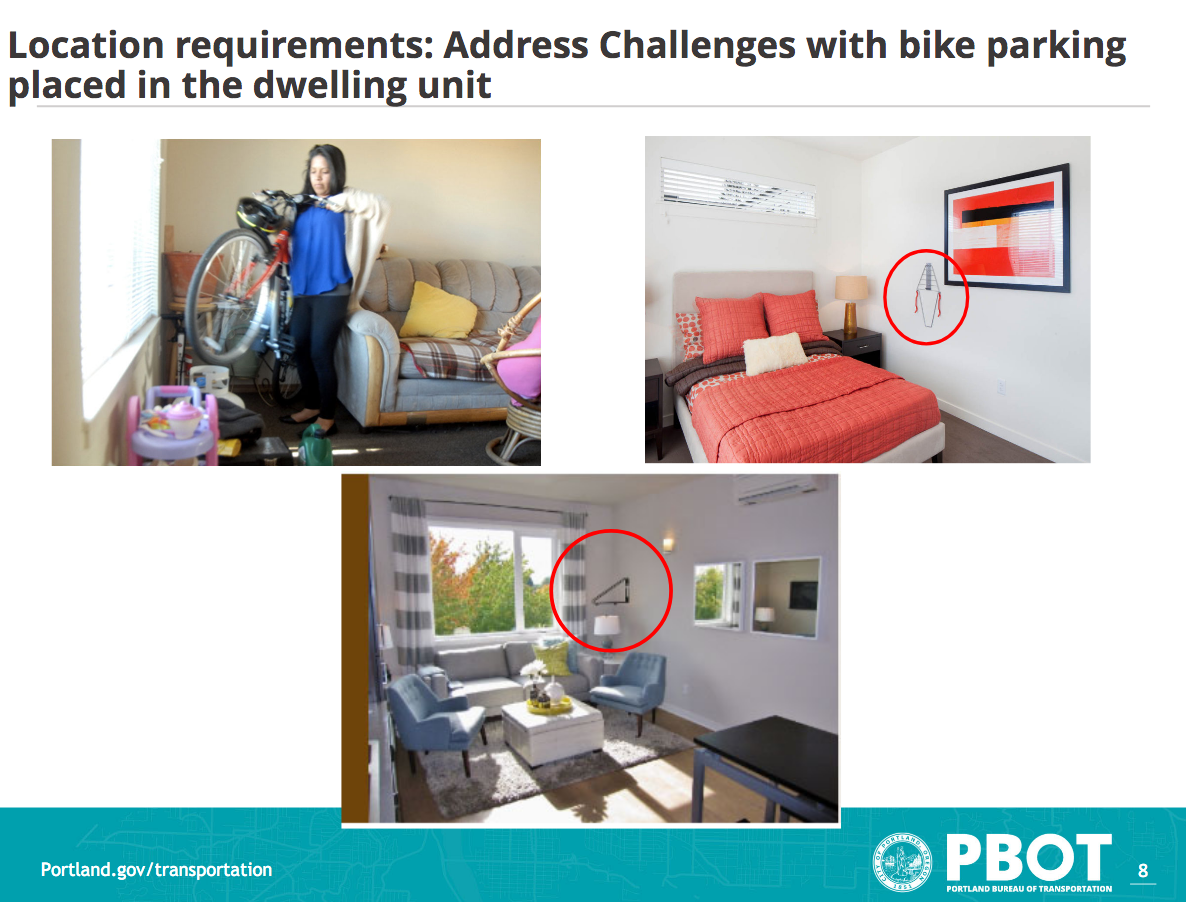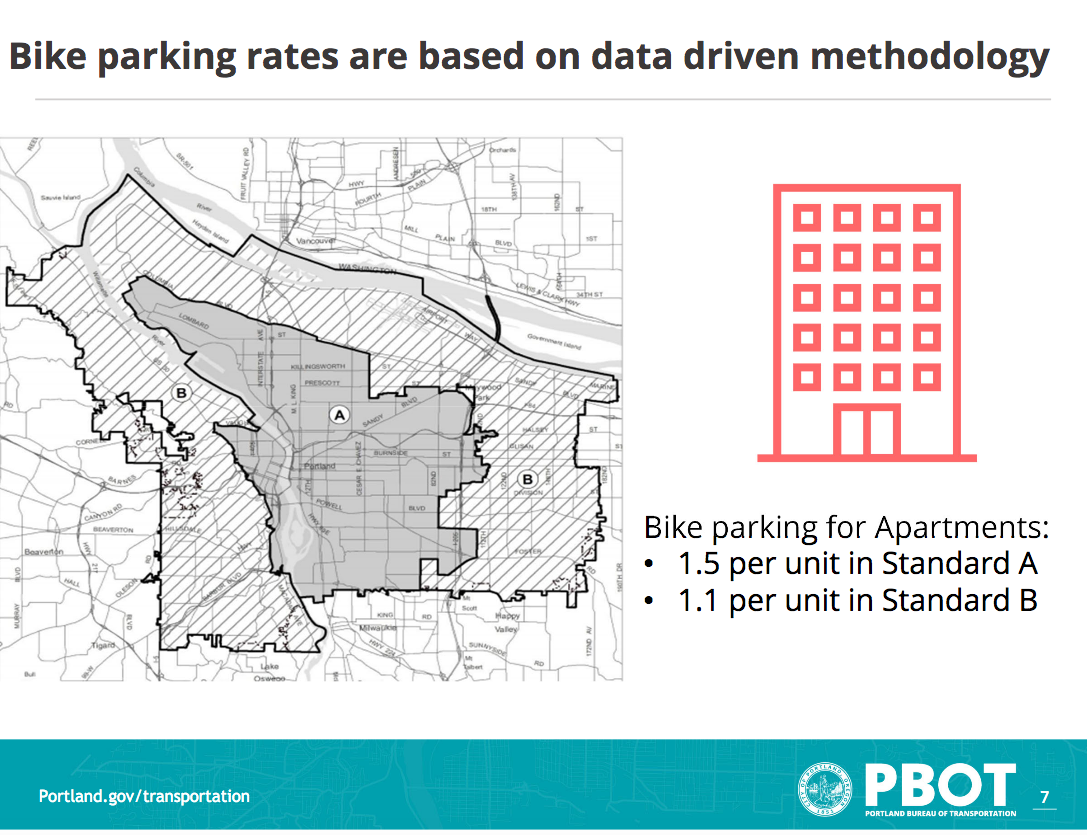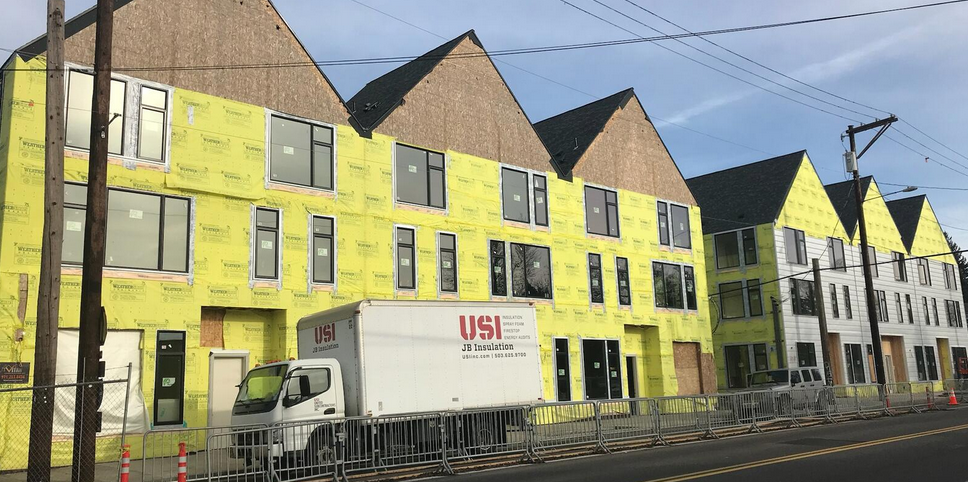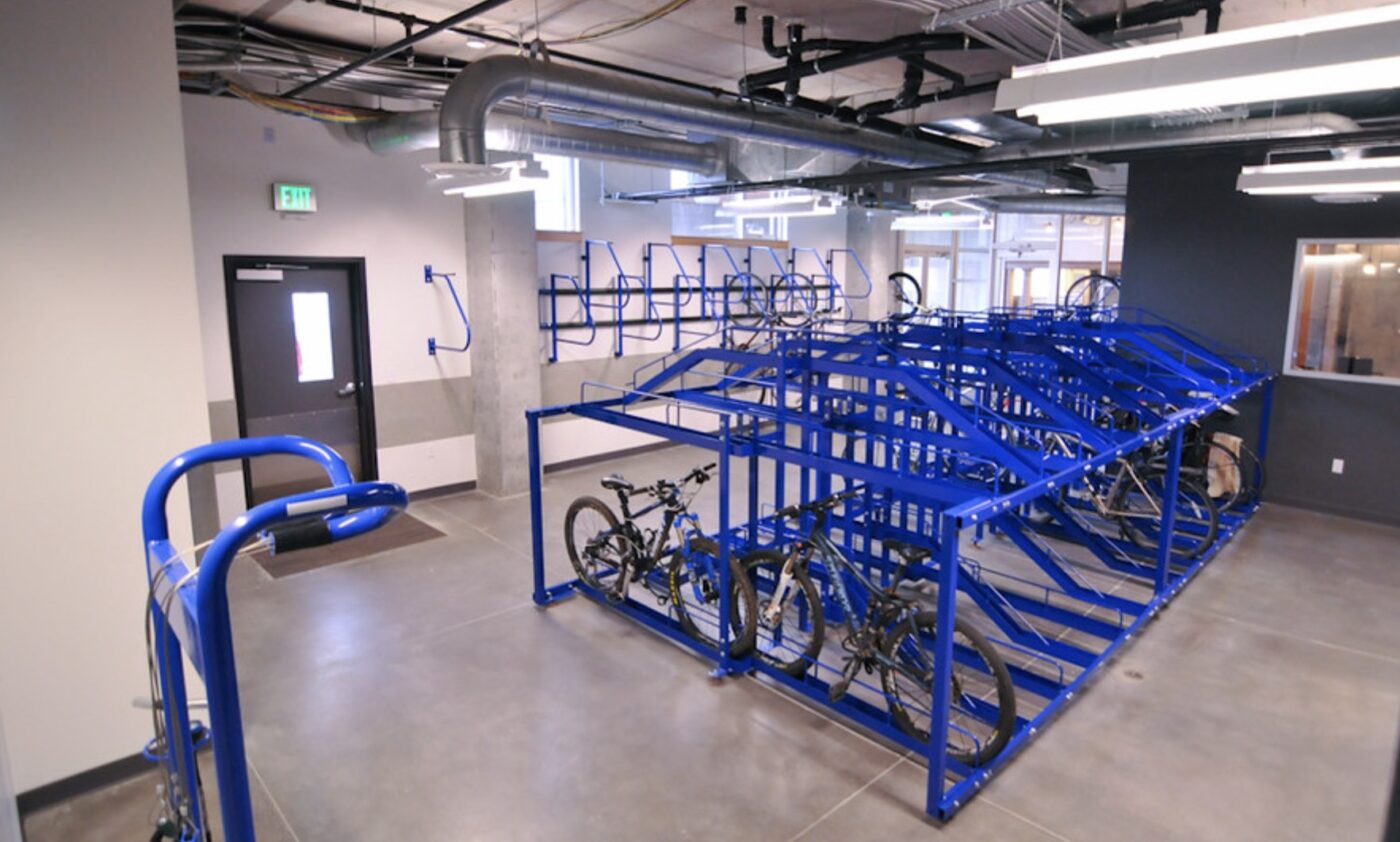A vibrant city has both affordable housing and access to safe transportation, the two go hand in hand — or at least they should. But in the face of Portland’s housing crisis, the city is pursuing a Regulatory Relief Project which “aims to increase housing production” through “temporary waivers and permanent changes” to certain building requirements — including bike parking standards. The Portland Planning Commission will hold a hearing about the proposed changes next Tuesday and is soliciting public comment.
Reports and bulleted lists can be mind-numbing, but this is the kind of insider baseball that determines how easily you will be able to park your bike. Put simply: code changes affect your life.
Here’s what you need to know…
Background
The Regulatory Relief Project began with last winter’s Bureau of Development Services survey of developers and others involved in the permitting process. The purpose was to learn what were the obstacles to increased housing production. Readers might remember that survey respondents viewed bike parking as a key cause of delayed housing production, and that a consultant working for the city estimated that bike parking in particular can add 3 to 6% to a project cost.
The survey results, particularly the narrative responses, were informative. Keep in mind that for-profit developers did not make up the majority of those surveyed, even the group of city staff outnumbered them. Other respondents included: applicants for construction permits; non-profit organizations developing new housing; businesses and professionals involved in housing development (like lawyers and architects); and city employees from the seven bureaus who review permits.
Last month, the Bureau of Planning and Sustainability released a draft set of 16 zoning code amendments in response to what was learned from the survey. The amendments are intended to provide regulatory relief and speed up housing production. They included changes to “requirements for bike parking, ground floor active use and height, nonconforming upgrades, bird-safe glazing, eco-roofs, façade articulation, neighborhood contact, and onsite loading spaces.”
Proposed Changes to Bike Parking


The specific changes proposed to the bike parking requirements are:
- Temporarily reduce the ratio of required bicycle parking from 1.5 to 1.0 spaces per dwelling unit in the inner pattern area and from 1.1 to 0.7 spaces in the outer pattern area.
- Temporarily suspend the requirement for large (i.e. cargo) bicycle parking spaces.
- Permanently eliminate the requirement for an alcove and proximity to the front door for bikes within dwelling units.
The Portland Bureau of Transportation made a presentation to the Bicycle Advisory Committee in August, and their slide deck explains the issues bulleted above.
But even with a helpful slide deck, land use and development are intricate subjects. Understanding the implications of the proposed changes is difficult for a lay person, partly because anyone with the technical expertise to really understand the issues probably also has a financial interest in a certain outcome. So figuring out who to listen to can be difficult.
My approach has been to do a lot of listening, to everybody, and to keep in mind the interests of the person doing the talking. Here are some of the people and groups I checked in with to balance out the survey findings and consultant reports.
Chris Smith
I reached out to Chris Smith, a long-time Portland transportation activist, who as a Planning and Sustainability Commissioner several years ago was deeply involved in designing Portland’s current bike parking code. Given his role in crafting the current code, I was surprised by how measured and moderate his response to the Relief Project was. He wrote:
There’s a very real policy trade off between building parking for the 15-25% bike mode share we want in 2030+ versus increasing housing cost now (and allegedly making some projects not pencil out now). I think adjusting the ratios temporarily is a valid thing to do in response.
Temporarily removing the cargo bike space (10′ x 4′) requirement is probably also reasonable until/unless we can demonstrate that folks who buy big front-loaders often live in multi-family housing. Most long-tail cargo bikes can probably squeeze onto a standard staple rack.
One of his specific concerns was the removal of the in-unit bike alcove:
The one that troubles me the most is the removal of the ‘alcove’ standard for in-unit bike parking. We know that before we introduced that standard a lot of in-unit parking was not in fact usable. [Ed: see the PBOT slide deck for photos of oddly-placed, unuseable bike hooks.] But I also concede that the alcove standard has proven challenging, particularly the way BDS has enforced it. I’d really like us to keep working on a better in-unit standard.
But mainly Smith viewed the project as an emergency package, one put together very quickly, and he is advocating for further study after the package is adopted, “I think there’s there’s a lot we could do if we had time to do a really good policy process …”
BikeLoud PDX
BikeLoud Chair Nic Cota told BikePortland that the organization is working with Portland Neighbors Welcome, an affordable housing group, as well as with Chris Smith, on a unified letter to the Planning Commission which recognizes that affordable housing and affordable and safe transportation “are two sides of the same coin.” The draft is currently being reviewed by all parties. Cota emailed that,
Overall our groups are asking that the Planning Commission and City Council assign a work group to review bike parking usage to understand how Portlanders use available bike storage, and look at how the code can be adjusted in the near future. We also want the commission to acknowledge how the code can best provide for the anticipated growth in e-bike ownership, especially as the city looks to roll out Portland Clean Energy Fund initiatives that gears to providing e-bikes to thousands of Portlanders in the next 5 years.
The Street Trust
The Street Trust (TST) wrote a letter and detailed technical memo to Commissioner Rubio, with a copy to PBOT, BPS, and the Planning Commission. This is the most prescriptive of the three approaches, and goes as far as to make dimensional, size recommendations to the code. TST Board Director Victor Duong signed the letter. Duong is a project manager at an architecture firm which might be why TST felt comfortable getting so deep into the design weeds.
The group also specifically brought up BIPOC inclusion at several points: “Finally, we ask all future regulations to be more BIPOC-equity focused because we can’t achieve 25% bike trips by 2030 if we are not including 25% of our population’s needs in our system design and execution,” and
Temporarily remove Design Review requirements for BIPOC owners/developers and consider a permanent removal until the city meets min diversity requirements for review board members. DR is a financial burden for small BIPOC owned projects.
And Duong ended the letter with some punch,
Commissioner Rubio, the time for bold action is now. We have a unique opportunity to redefine Portland as a city that leads with compassion, innovation, and inclusivity. Our plans, policies, and codes must be pro-human, not pro-bike or pro-housing. We are crafting a city for people, not just buildings and bikes.
Conclusion
Assuming that the Planning Commission approves the proposed code changes, the next step in the code change process will be a City Council hearing and vote to approve the code. According to the project timeline, the Council hearing will be in December.
The Regulatory Relief Project has an online tool for submitting comments to the Planning Commission, and so far 92 people have commented. A glance through the comments shows that there is much more on the table than just bike parking. As I eyeball the list, it looks like window glazing for protecting birds is a much hotter topic than bicycles.
The deadline for comments to be considered before Tuesday’s hearing is 5:00 PM Monday afternoon.





